 Crime
Crime  Crime
Crime  Technology
Technology 10 Hilariously Over-Engineered Solutions to Simple Problems
 Miscellaneous
Miscellaneous 10 Ironic News Stories Straight out of an Alanis Morissette Song
 Politics
Politics 10 Lesser-Known Far-Right Groups of the 21st Century
 History
History Ten Revealing Facts about Daily Domestic Life in the Old West
 Weird Stuff
Weird Stuff 10 Everyday Products Surprisingly Made by Inmates
 Movies and TV
Movies and TV 10 Actors Dragged out of Retirement for One Key Role
 Creepy
Creepy 10 Lesser-Known Shapeshifter Legends from Around the World
 Animals
Animals 10 Amazing Animal Tales from the Ancient World
 Gaming
Gaming 10 Game Characters Everyone Hated Playing
 Crime
Crime 10 Terrifying Serial Killers from Centuries Ago
 Technology
Technology 10 Hilariously Over-Engineered Solutions to Simple Problems
 Miscellaneous
Miscellaneous 10 Ironic News Stories Straight out of an Alanis Morissette Song
Who's Behind Listverse?

Jamie Frater
Head Editor
Jamie founded Listverse due to an insatiable desire to share fascinating, obscure, and bizarre facts. He has been a guest speaker on numerous national radio and television stations and is a five time published author.
More About Us Politics
Politics 10 Lesser-Known Far-Right Groups of the 21st Century
 History
History Ten Revealing Facts about Daily Domestic Life in the Old West
 Weird Stuff
Weird Stuff 10 Everyday Products Surprisingly Made by Inmates
 Movies and TV
Movies and TV 10 Actors Dragged out of Retirement for One Key Role
 Creepy
Creepy 10 Lesser-Known Shapeshifter Legends from Around the World
 Animals
Animals 10 Amazing Animal Tales from the Ancient World
 Gaming
Gaming 10 Game Characters Everyone Hated Playing
10 Deadly Warnings The World Ignored
Every so often, a disaster comes along that’s so catastrophically, unfairly, life-shatteringly ginormous the whole world sits up and pays attention. Most of them, like the Asian Tsunami or Spanish Flu, seemingly spring up from nowhere, trailing chaos in their wake. But, just occasionally, you get a planet-sized catastrophe that we’ve not only known about for years, but we’ve been too darn lazy to do a thing about it.
SEE ALSO: 10 Creepy Reasons Climate Change Is Starting To Look Like A Religion
10The Haiti Earthquake
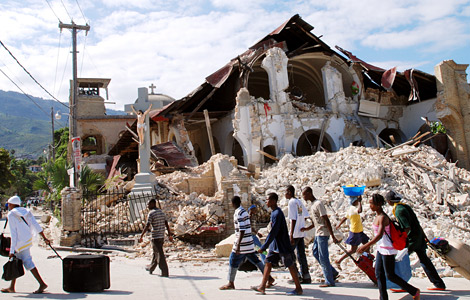
In 2010, an earthquake of terrifying proportions hit the Republic of Haiti. Thousands were killed, whole villages annihilated, and the capital turned into a wasteland of ruins and suffering. For geologist Claude Prepetit, it was validation of the worst possible kind.
Since 1998, researchers had been predicting a major earthquake in the region at some point. With such a vague prediction, it’s almost understandable that officials ignored them, but Prepetit had taken that original research and made it frighteningly relevant. The quake, he was convinced, would hit Haiti worst, where the number of illegally constructed buildings in Port au Prince would turn his country’s capital into a “vast cemetery.” Over the course of a frantic year, Prepetit wrote papers on the subject, spoke before international audiences, and contacted government officials directly, but Haiti’s leaders simply didn’t listen. When they could have been spending money to tear down unstable buildings and construct earthquake-proof ones, they were instead blowing the budget on expensive 4x4s to cruise around in. Finally, on January 12, 2010, the inevitable happened.
9The Fukushima Meltdown
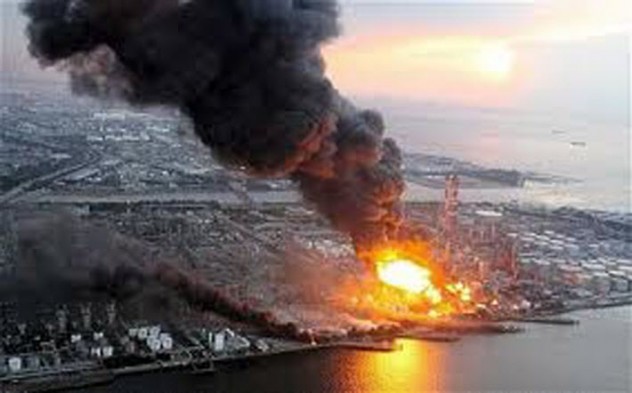
The 2011 Japanese earthquake was a disaster on a near-unprecedented scale. A magnitude 9.0 quake was followed by a devastating tsunami, which was in turn followed by possibly the worst nuclear accident in history. It was exactly the sort of catastrophe that no one could have predicted. No one, that is, but Koji Minoura.
Twenty years before a gigantic wave sent the Fukushima reactor critical, Minoura was investigating a reference in an ancient poem to a tsunami in Northeast Japan. Digging through historical records, he uncovered the Jogan Event—an earthquake and tsunami that killed 1,000 people in A.D. 869. By the late 1980s, he had traveled to the site and uncovered some startling evidence that this part of Japan got routinely flattened by a tsunami every 1,000 years or so. And the next one was way overdue. Over the next 20 years, Minoura produced a flurry of work warning about the inevitable annihilation of the Fukushima area. His articles made it into magazines, periodicals, and journals—all of which were completely ignored. Two years after his predicted tsunami hit, parts of Japan are still in ruins and the reactor still poses an immediate danger.
8The Dangers Of Asbestos
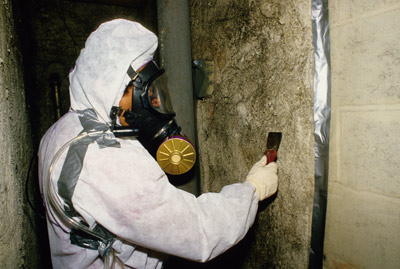
Asbestos is one of the 19th century’s big mistakes. Recognized for its strength and resistance to fire, manufacturers began splashing the stuff around by the bucket load. For nearly 100 years, it cropped up just about everywhere, despite causing lung cancer, disease, and early death.
People had suspected since the early 1900s that asbestos might be dangerous, with a high rate of illness and death being reported around asbestos-mining towns. But it wasn’t until 1938 that a study commissioned by asbestos manufacturers conclusively proved that it was basically airborne death. At this point, those same manufacturers suppressed the findings and denied all knowledge of them. The result was illness and poverty for hundreds of thousands of workers. Because there was “no proof” linking asbestos to lung cancer, those who came down with it were ineligible for compensation. Companies frequently just dropped them, leaving them and their families to die in penniless misery. As late as 1992, asbestos companies were still refusing to shell out money to their dying ex-workers, claiming there was little evidence of a link between asbestos and illness.
So when did we finally get around to banning this murder-product? Guess what: We still haven’t.
7The Financial Crash

Unless you’ve been living in a cave or off a trust fund, you’ve probably heard of the recent financial crash. Now, there are a lot of people out there who claim they predicted the banking collapse, but only one came close to actually averting it.
Meet Brooksley E. Born. In 1996, she was appointed to the Commodity Futures Trading Commission (CFTC), a government body intended to keep a watch on the financial markets. At the time, Wall Street was booming from the effects of deregulation. The rich were getting richer, the less-rich were becoming the new rich, and even the poor were getting a slice of the pie. One of the centerpieces of this wealth explosion were something called financial derivatives. In the halcyon days of 1996, no one could imagine they had the power to turn a regular financial crisis into the type of crash unheard of since the ’30s. No one, that is, except Brooksley Born.
Almost from the moment she entered the CFTC, Born was fighting to reign in credit-swap derivatives—a move that could have lessened or even averted the recent meltdown. Unfortunately, her warnings came to the attention of free-market advocate Alan Greenspan, who lobbied Congress to strip the CFTC of its power, arguing that Born’s anti-derivatives stance would “cause a financial crisis.” Completely failing to anticipate the dramatic irony, Congress sided with Greenspan, stripped the CFTC of its powers, and forced Born out—resulting in recession, mass-unemployment, skyrocketing prices, and half a decade of political instability.
6History’s Deadliest Avalanche
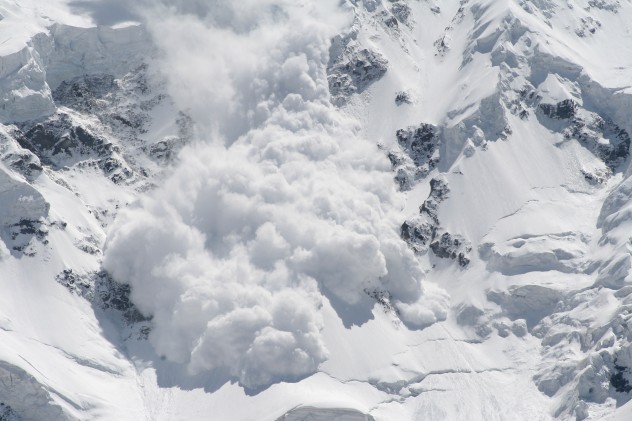
In 1962, graduates David Bernays and Charles Sawyer were unwinding with a long climbing expedition through the Cordillera Blanca mountain range in Peru. Between feats of manliness and posing against epic backdrops, they decided to examine a glacier known only as “511,” the suspected source of an avalanche that occurred a few years beforehand. What they discovered was enough to put them off their expedition.
Glacier 511 was unstable. As in seriously unstable: The whole thing was basically one push away from obliterating everything in the valley below—a valley that just happened to be home to several thousand people. Returning to civilization, Bernays and Sawyer did what anyone would do and alerted the authorities, who promptly threw them in jail for causing a panic. After two weeks of struggling to be heard, the duo eventually recanted their claims and returned home. Unfortunately for the Peruvian authorities, their victory was short-lived: On May 31, 1970, an earthquake in the region triggered the world’s deadliest avalanche. Glacier 511 and more collapsed, burying over 25,000 people under a wall of ice and rock.
5Leaded Gas

In the early 1960s, scientist Clair Patterson made a worrying discovery. Our air was absolutely swimming with lead, hundreds of times more than when our ancestors roamed the Earth. This was bad news: Lead is super-toxic. Prolonged exposure can result in anything from anemia to constipation to death. Being a scientist, Patterson decided to trace the source of all this murder-air and discovered it was due to leaded gasoline being used in cars. Manufacturers of leaded gasoline took one look at his findings and decided to destroy his life.
For the best part of a decade, companies with friends in high places hounded Patterson from jobs, cut his research funding, and generally went out of their way to discredit him. Pseudoscientists were wheeled out to declare lead was perfectly safe, and the whole country kept happily pumping it into the atmosphere, painting their walls with it, and using it in food. It took until 1970 for Patterson to get the Clean Air Act passed, and a further 17 years to get lead banned from gasoline. Some 30 years after his research conclusively proved all this lead was toxic to us, the government finally removed it from food containers and paint—a delay that means the average American now has 625 times more lead in their blood than people in the 19th century. That ain’t a number to be proud of.
4The Wall Street Crash
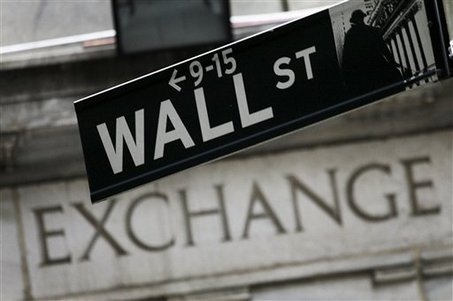
The 1929 Wall Street Crash was the mother of all financial meltdowns. Forget our current recession: The Crash ushered in the Great Depression, a time of 25 percent unemployment, mass internal migration, and groaning misery for millions. And one guy saw it all coming.
On September 5, 1929, economist Roger Babson famously gave a speech where he predicted an impending crash, claiming it would be absolutely “terrific.” Slightly less than two months later, Black Tuesday hit and irreversibly changed the course of world history. Over $5 billion was wiped out of the economy, a figure which is almost beyond calculating in today’s money. The Depression was ushered in and a decade of misery sparked off, culminating in FDR, the New Deal, and a whole new political consensus. Now, predicting an event a mere two months in advance may not sound so impressive, even when it’s of epoch-shaking magnitude, but according to The Guardian, Babson had been warning about the Crash for years. We only remember his September 5th speech because of the timing. The reality is, this guy was a modern-day Cassandra, and everyone ignored him until it was too late.
3Tobacco’s Cancer Link

If you want to witness evil in action, look no further than Big Tobacco in the 20th century. For decades, firms like Phillip Morris and Imperial got stinking rich pushing people into early graves, shilling their products to babies, and generally acting like the standard cartoon cliche of a soulless multinational. But the lowest point of all has to be their active suppression of studies warning about a link between smoking and cancer.
As early as 1930, German researchers had noticed a correlation between the two. By the 1940s, it was pretty much conclusive. Want to guess how Big Tobacco reacted? That’s right! By spending the next six decades smearing the science. When people began to worry about the effects of smoking in the ’50s, they set up a phony scientific council to counter the claims. When the Surgeon General conclusively linked smoking to a range of health problems in 1989, they rejected the findings. Unbelievably, last year Imperial Tobacco still continued to claim smoking doesn’t cause cancer. Thanks in part to that evil, over 100 million people died from smoking in the 20th century alone. That’s more than were killed by both world wars.
2The Rise Of Hitler

In 1919, Germany had ended World War I with an unconditional surrender. Not exactly in the mood for mercy, the Allies, led by the French, decided to slap the aggressive nation with a fine so unimaginably huge it would take them until 2010 to pay it off. As far as British economist John Maynard Keynes was concerned, this was a shortcut to disaster. By crippling the German economy with sanctions, the Allied nations would inevitably trigger panic, collapse, and a very, very dark time. Probably feeling like the character in a time travel movie who fails to alter the future, Keynes lobbied governments, wrote articles and, in a last ditch effort, published these prophetic words:
“If we aim at the impoverishment of Central Europe, vengeance, I dare say, will not limp. Nothing can then delay for very long the forces of Reaction and the despairing convulsions of Revolution, before which the horrors of the later German war will fade into nothing, and which will destroy, whoever is victor, the civilisation and the progress of our generation.”
Since this is an article on warnings that were ignored, you can probably guess what happened next. Keynes was brushed off, the German economy evaporated, extremism swept the nation, and an unknown artist called Adolf decided to give politics a whirl. Way to go, France.
19/11
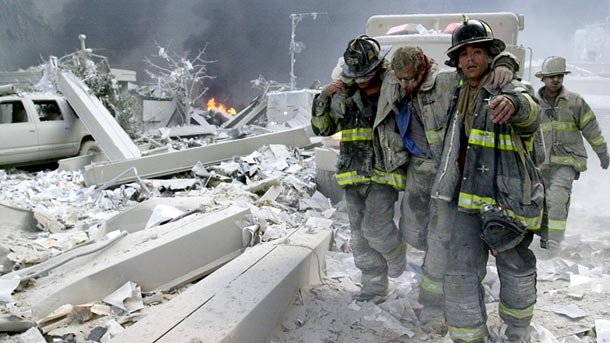
In September 2012, the New York Times released the results of
an investigation into the Bush administration’s knowledge, in 2001, of an impending terrorist attack. The results were shocking. Far from being caught unawares, America had known for nearly a year that a devastating attack was imminent, but a combination of bureaucracy and bungling meant the warnings were ignored.
As early as June 22, 2001 it was known that Al-Qaeda strikes were imminent. There was good intelligence backing this up,: It had the blessing of the CIA, and was considered a certainty. Unfortunately, the politicians in the Pentagon stopped any action being taken and dismissed the report as a fabrication, one concocted by Saddam Hussein to distract attention from himself, despite such a theory making absolutely no sense. The rest of the Times’ report is a depressing litany of repeated warnings ignored, sources downplayed, and the CIA reduced to begging the President to take notice. On June 29th, July 9th, July 24th, and August 6th, the issue was raised with extreme urgency, and it was batted aside each time. The result of this bungling was the single worst terrorist atrocity ever committed on American soil, the deaths of 3,000 people, a decade of war, and the erosion of our civil liberties. All because the government was apparently too obsessed with an Iraqi dictator to believe its own intelligence services.








